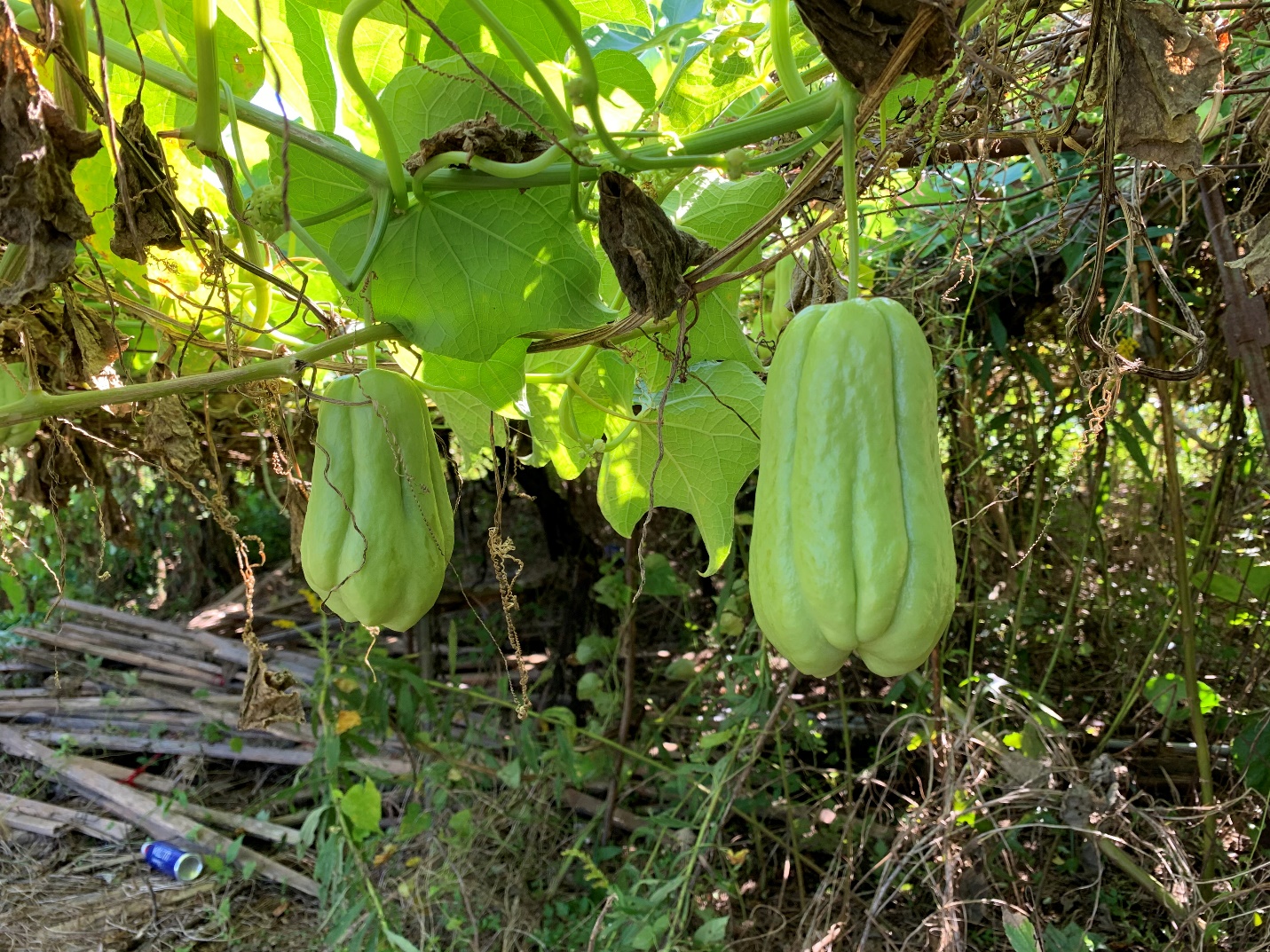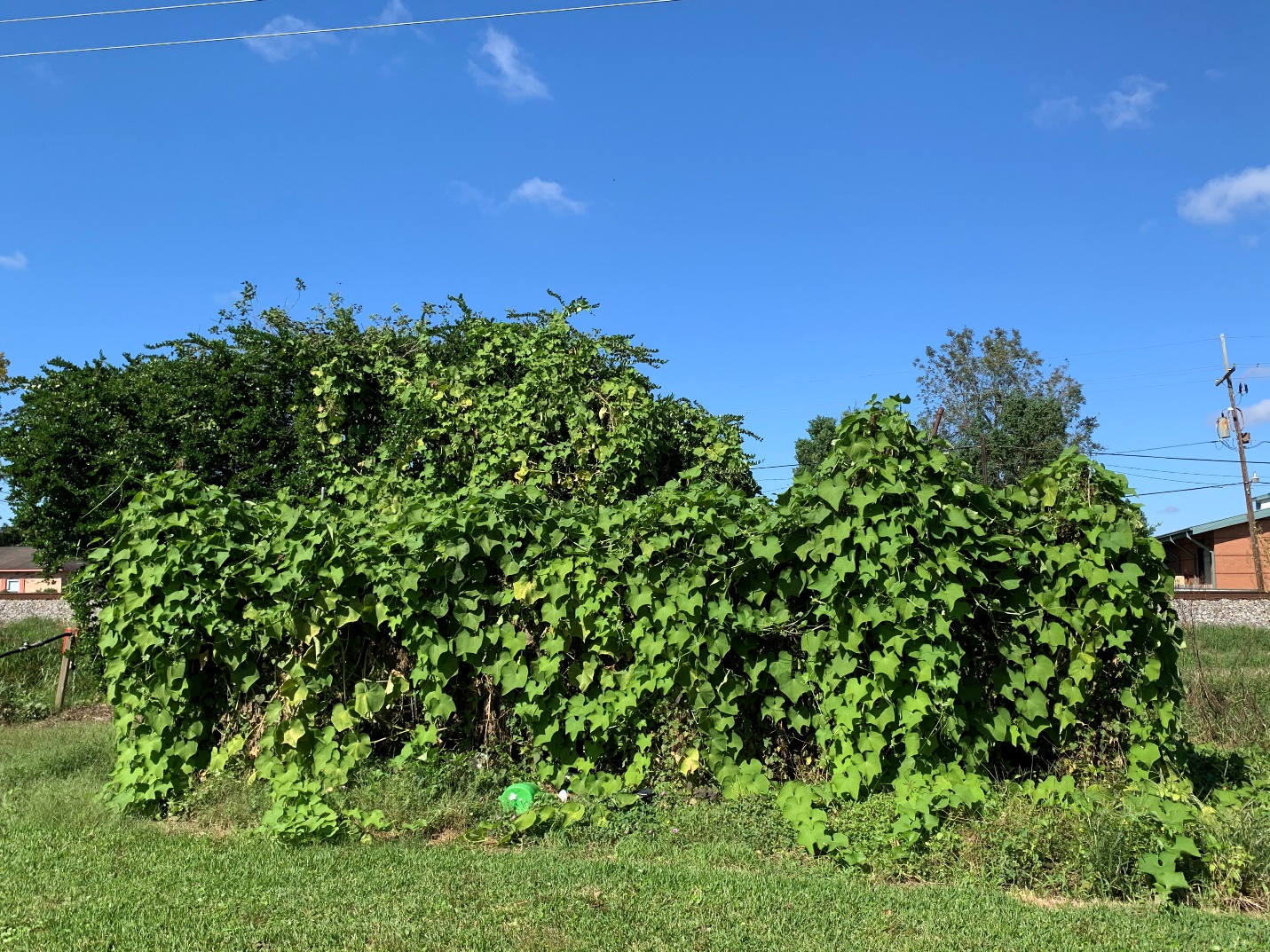Old Family Tradition of Mirliton Growing Flourishes in St. John Parish
By Renee Lapeyrolerie and Dr. Lance Hill
First, a little genealogy. In the 1970s, Joseph “Junior” Remondet started his first mirliton (chayote) vine in Reserve, St. John the Baptist Parish in Louisiana. Remondet’s uncle had handed down the old family variety that they had for generations. Junior shared it with his bother-in-law and next-door neighbor, Earl Perque, who bequeathed it to his son Paul Perque It’s a bit like the begats in the bible, but Louisiana mirliton growers believe in preserving family traditions.

Figure 1 Remondet-Perque Heirloom Mirliton
Mirlitons are in the Remondet-Perque family’s genes. The family has grown them for generations. Junior Remondet is a big, garrulous man with a thick Louisiana French accent. His uncle told him to plant two mirliton seeds in keeping with an old myth that you need a male and female plant; but it was good advice since it doubled his chances of success. The family heirloom mirliton is now primarily in the care of Paul Perque. The trellis 15′ X 10’ and is made of fence posts and covered on top with livestock panels (4”x4” mesh) and receives full sun.

Figure 2 Joseph ‘Junior’ Remondet, Paul Perque, and Ryan Remondet.

Figure 3 Paul Perque with his current vine, has yielded over 300 mirliton at publishing.
Paul Perque’s late mother, Sylvia, took careful notes of the harvest in the back of her address book. Her records include years of family and friends who would call and request mirliton for purchase by the dozen to make stuffed mirlitons. Miss Sylvia was a great cook, known for making pastries for the local church and school.

Figure 4 Sylvia Audiffred Perque’s family notebook of 2013 Mirliton Harvest.
Ryan fondly remembers helping his father tend to the mirliton trellis, running new wires across the top. Ryan is in the grocery produce business and recounts when a colleague from the West Coast visited him and was mystified by the enormous quantity of chayote coming into Louisiana since there were few of the Latino and Asian populations that valued the squash. Ryan told him the history of home growing mirlitons in Louisiana. For the coup de grace, he had his mother prepare his colleague some of the traditional shrimp-stuffed mirlitons.

Figure 5
The vine is located at the end of the family lane and adjacent to a large drainage ditch alongside the Canadian North Railroad. Junior’s uncle had suggested that he plant near a water source such as this, and Paul credits the vine’s success to this location.
The vine has a traditional Louisiana overhead trellis (arbor) and access to an adjacent tree that it likes to climb. In 2019, an early frost—the first in over a century—killed the top of the vine but it recovered and regrew in the spring of 2020.

Figure 6 Full Vine.

Figure 7 Earl Perque with his mirliton vine in background.